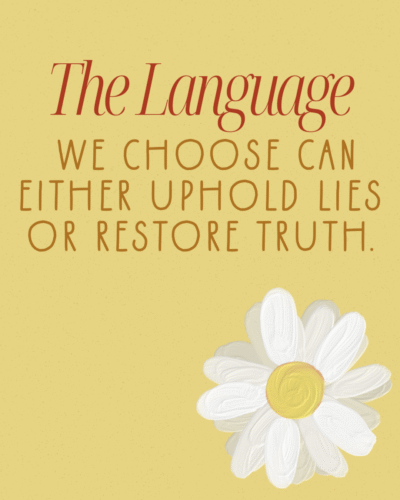When we talk about slavery, the language we choose can either uphold lies or restore truth.🚫 The Problem with “Owned” Frames human be
 When we talk about slavery, the language we choose can either uphold lies or restore truth.
When we talk about slavery, the language we choose can either uphold lies or restore truth.
🚫 The Problem with “Owned”
Frames human beings as objects
Normalizes the oppressor’s perspective
Suggests legitimacy in the idea that a person can be property
✅ The Power of “Enslaved”
Centers the human being, not the oppressor
Shows that slavery was imposed, not an identity
Keeps blame where it belongs: on those who did the enslaving
Acknowledges resistance and dignity that survived despite bondage
🔍 Side-by-Side: Oppressor’s Lens vs. Human Lens
| Old Wording | Truthful Wording |
|---|---|
| Jefferson owned 600 slaves. | Jefferson enslaved 600 people. |
| She was a slave. | She was an enslaved woman. |
| He was born a slave. | He was born into slavery (but not born without humanity). |
| Slaves were property. | People were forcibly treated as property. |
🌱 Why This Shift Matters
Language shapes memory.
“Owned” reflects the lie of dehumanization.
“Enslaved” restores dignity and truth.
Every time we choose enslaved, we refuse to let oppressors have the last word. We tell history through the eyes of those who endured it — not those who profited from it.
1. Historical Documents (1700s–1800s)
In slave bills of sale, plantation records, and wills, enslaved people were listed as property alongside cattle, land, or tools.
Example: “The estate includes 200 acres, 5 horses, 3 cows, and 12 Negroes owned by the deceased.”
Newspapers of the time ran ads that used the word “owned” or no humanizing description at all:
Example: “For sale, one strong Negro boy, owned by Mr. James Carter.”
The emphasis was on legal ownership — reflecting how the system justified slavery.
2. Abolitionist Era (1800s)
Abolitionists sometimes used the same “owned” language to show the brutality of slavery, but they also started to describe people as enslaved:
Frederick Douglass described himself as “a slave in fact” but also said “I was enslaved by Mr. Covey.”
Harriet Jacobs (Incidents in the Life of a Slave Girl) carefully showed the inner life of enslaved women, shifting focus from ownership to their humanity and struggle for freedom.
3. 20th Century Scholarship
History books for much of the 20th century still leaned on “slaves” and “owned,” reflecting a white-centered narrative.
For example: textbooks would say, “The South owned four million slaves by 1860.”
This phrasing made slavery sound like a fact of economics, rather than a violent system imposed on human beings.
4. Contemporary Scholarship & Museums
Today, there’s a deliberate shift. Institutions like Monticello, the Smithsonian’s National Museum of African American History and Culture, and the Whitney Plantation use the term “enslaved people” instead of “slaves.”
Example:
Instead of: “Thomas Jefferson owned over 600 slaves.”
They say: “Thomas Jefferson enslaved over 600 people.”
That small shift highlights the agency, humanity, and injustice. It makes clear that no one can truly be “owned.”
Why This Change is Sacred
Language isn’t just academic — it’s about memory and justice.
“Owned” reflects the dehumanization.
“Enslaved” restores dignity and truth.
It’s part of a larger effort: to tell history through the eyes of those who endured it, not those who profited from it.
✨ Empowering Reminder:
No one is “born a slave.”
People were born free in spirit and were enslaved by systems of violence.